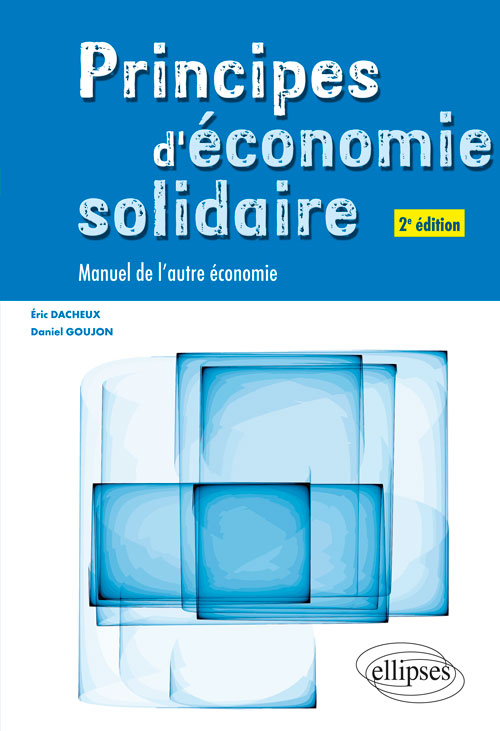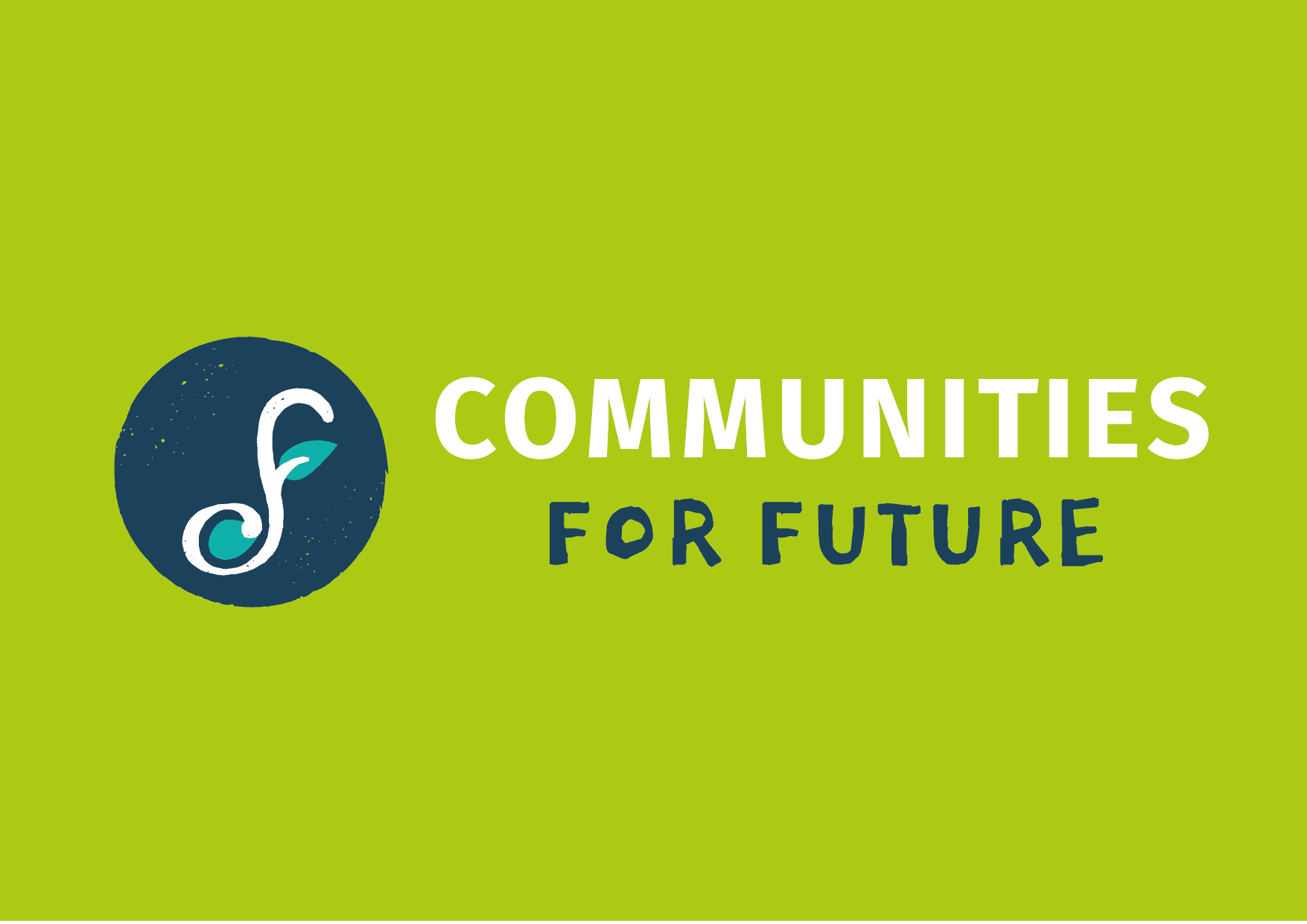By Josette Combes (RIUESS)
It is the second edition of The Handbook on the Other Economy (Principes d’économie solidaire – Manuel de l’autre économie): directed by Eric Dacheux and Daniel Goujon, it is to be put in all hands, first and foremost those of the Master students, for whom it will be an abundant source of references, definitions, historical reminders, perspective and theoretical proposals. But even more importantly, it is a work of popularization in the noble sense of the term, which offers the opportunity, now that the term “solidarity economy” circulates in every direction – unfortunately often misused, for each citizen to familiarize him/herself with this economy, its foundations and its potential, so that it develops beyond the limited (though expanding) circle of its practitioners.
We will begin this review – just for once – with the last sentence of the book: “the solidarity economy now invites us to free ourselves from the economic chains that still hinder our freedom and to take our place fully: as economic actor and no longer economic victim”. (212)
How can this miracle be achieved? By establishing a deliberative democracy through the implementation of local public spaces where economic decisions are debated, not only concerning economic agents “obeying the law of the market” but a much more complex set including the consumer to whom the production is destined, without forgetting (which is too often the case) nature from which the materials, air and water are extracted, which are subject to potentially harmful artifacts and the social cohesion affected by the effects of the system.
First of all, the book addresses this essential question: what is the economy and in particular what is the solidarity economy?
The authors begin by stressing that the solidarity economy is a social science and that it can only be approached through a multidisciplinary approach and not only through the mathematical prism dear to the supporters of the orthodox economy, which essentially measures financial flows and evaluates economic return solely in terms of profit. However, as Dacheux and Goujon quite rightly point out, the economy is not reduced to the confrontation of supply and demand, there is an entire economy that falls below the radar of GDP and which, however, allows a society to continue or even constitutes its foundation “the ground floor” as Braudel defines it. Their demonstration reviews the micro approach (scarcity) and the macro approach (money) and a number of economic theories In general, systems fall between two poles: the liberal organization where “only goods that have a demand for a labour factor with a surplus, this surplus being necessary for the remuneration of the capital employed (70); “the state organization where power takes all economic decisions in an interventionist and authoritarian manner (70). However, there are many other resources besides economic resources – social resources, cultural resources, natural resources – that are not subject to production and monetary measurement’ (71). The solidarity economy constitutes a third pole that promotes a rebalancing of public policies, with civil society developing proposals and inviting political leaders to support them in their achievements. This democratic dimension is articulated with a symbolic dimension (solidarity, linking without binding) and a limitation if not the suppression of the speculative use of currency. The solidarity economy is seeking a third way between “a methodological individualism that denies social constraints and a holism that denies individual latitude”: it is a question of constituting relational resources allowing the emergence of a collective intelligence oriented towards the implementation of the common good…
Solidarity economy, a solution to the democratic crisis.
To begin their second part, the authors postulate that democracy is in crisis, the systems that year after year allowed social cohesion no longer correspond to the realities of the times, particularly after more than 40 years of liberal deregulation. To analyse the very term “democracy,” it is necessary to rely on a notion recently introduced into political reflection, (even if its emergence dates from the Enlightenment, notably with Kant), that of “public space” according to Habermas’ (85). A society is built in the combination and/or confrontation of three orders that form its foundation: political, economic and symbolic. Democracy is not an unchanging fact but an evolving “purpose”. If the solidarity economy claims its democratic dimension, then it must articulate the three orders without one of them dominating at the risk of an imbalance; the one from which current societies precisely suffer through the hypertrophy of the economy to the detriment of the other two dimensions. Since the political order is the place where the norm is constructed, the existence of a public space for deliberation can generate communicative power in order to influence social organization. This space characterized by “open, porous and mobile horizons” is the potential place for collective reflection oriented towards the public good, a place where subjectivities are embodied and subtle negotiations take place between the stakeholders of a circumscribed territory. It is thus “the place where politics is legitimized, the foundation of the political community and the place where they are staged. (92).
The role of the solidarity economy in the vitality of public space is essential. Citizens, actors of social and economic innovation, solicit their political interlocutors to change the decision-making configurations, their composition (citizen participation), their orientations (modification of economic options) and their culture (inversion of bottom-up proposals contratry to the culture of overhanging verticality,). We will find here many examples of networks acting in this direction as well as the various variations that this entails…
Solidarity economy, a utopia in action
If the law alone is not enough to maintain a successfull living together,(104) the cement that binds a community rests largely on its adherence to symbolic universes, a role played by religion in most societies. On the other hand, in secularized societies, the registers of symbolism have evolved and are multifaceted (art, culture, science, mythologies) and one could add modes in the Barthesian sense. As for utopia, it suffers from a credit deficit due to the failure of previous attempts to renew societies (various and varied socialisms) or the inaccessibility of their elucubrations.
However, its very function is to resist established ideologies and mythologies, not to defeat them but to overcome them by demonstrating the obsolescence of certain paradigms and replace them with new ones, in fact resulting from a new rationality. The solidarity economy “is a project to deepen democracy in order to develop participation within civil society, to involve citizens in decision-making within the political system and to extend democracy within the economic system itself” (…) a utopia, a social project, making democratic debate the cornerstone of living together… (113). It is not a question of tearing down a system and replacing it with a new one, from which everything should be invented, but rather of making it evolve through the involvement of citizens in the political and economic decision from which they are excluded in the current system… This means that the solidarity economy is accused by extremists of being lukewarm and by lukewarm people of being extremist (115)
Is solidarity economy real economy?
The analysis of Dacheux and Goujon uses the concepts of economic circuits (a triangulation between production, income and expenditure). They highlight the weakening of the power of employees and trade unions in the face of the disruptions brought about by globalisation and the competition between territories and humans, and they review the different theories of justice, particularly that of Rawls (123, 124). For the solidarity economy, it is a question of getting out of the bipolarization of liberalism versus Keynesianism by either breaking with these logics (alternatives) or mitigating their effects (adaptation). In all cases, these positions imply a desire for civic engagement, a social responsibility that escapes market logic without being based on State regulation of trade. (129). The logic of economic profitability is being erased in favour of a logic of social utility.
On several occasions it is recalled that the economic sphere is not limited to that of financial flows, that there are activities that are production and exchange without mediation of currency (in particular, the author notes, the domestic sphere provided mainly and free of charge by women). In this respect, the solidarity economy renews the use of money, by creating ethical investments, social currencies, zones de gratuité, etc. It is a question of limiting money to its function as a reverse exchange of the absurd financialization that is endangering economic and human equilibrium at the moment… The solidarity economy is more than real since it recomposes the links between the political, economic and symbolic orders and if its economic weight is still very low, its power to demonstrate its ability to give meaning to human exchanges is undoubtedly essential.
Chapter 7 on the place of the solidarity economy in Europe suffers from an update on its recent developments. If the finding on the breakdown of the European vision is relevant, the authors should have reviewed their references. Thus, RIPESS Europe is considered to be on the verge of being formalised, whereas the network has now been in existence for 7 years and has accompanied the start of developments in Greece, in the Eastern and Northern Europe where the solidarity economy was not structured. It brings together networks from 17 European countries, some of which are leading groups extended to their regions, such as Finland in Scandinavia or Croatia in the Balkans.
Similarly, the lack of linkage with social movements is denied by a whole series of convergences in which both national and European networks are involved. Similarly, at the international level, the SSE exists in many forms and titles in all countries with model transmissions from one continent to another (Japanese tekei inspired amaps and CSAs, Argentinean recovered companies inspired business takeovers in Europe, Brazilian business incubators acclimated in Europe). In addition, the UN task force devotes part of its work to SSE, the ILO recognizes that the solidarity economy has a role to play in maintaining the quantity and quality of employment and devotes part of its ILO academy to it.
This is obviously the limit of such an exercise. The theory is intended to travel relatively well in time but the history of development changes by definition over time. While the solidarity economy is still often a survival economy, we are seeing more and more companies that are functioning well, paying their members properly while maintaining democratic governance. It is not an economy only of services and the fundamental principles do not represent a handicap to the establishment of industrial companies, even if we cannot envisage an arms industry here! As the authors point out, the solidarity economy represents a new model of development and it is enough to identify the initiatives that are multiplying in the countries of the South to see this.
We will not comment here on the chapter on the strengths and weaknesses of the solidarity economy since once again the chapter suffers from a lack of updating, particularly because the lines have moved between the supporters and detractors of the SSE. Thus the reflection on tdegrowth is infused with the actors of the solidarity economy who in some cases practiced degrowth without claiming this ideology. Thus, the change of collective imaginary dear to Latouche is integrated into the current discourse of the SSE. Similarly, the economics of conventions is not so far removed from the evolution of SSE. At this point, we will distinguish the “theoretical chapel quarrels” from the evolutions on the ground which are by definition always in advance since the theory is the reappraisal of a continuously evolving reality thanks, it is true, to the mirror effect of the concepts. The weaknesses of the SSE are real but they have changed register. One of the main ones remains the difficulty of regulating the right distance between market, State and reciprocity. and articulating political activism, economic actions and utopian project, while avoiding the pitfall of contradictions between discourse and practice, practice and theory, the project of society that it carries and the massive evolutions of the current society (189)
The book ends with a praise of deliberation, for which solidarity economy would be a spearhead introducing into the social game both a questioning of the foundations of economic science that places the market “hors-sol in a way” operating on logics foreign to any consideration of humans and their territories. Opposing Hayek the ultraliberal theorist to Mauss and his essay on the gift, the authors state that the laws of the market are a fiction maintained to justify the abuses committed in its name, while the economy is the result of oriented human decisions. Deliberative theory considers that when it comes to common affairs, citizens form their opinions and wishes in the collective discussion and that the resulting general interest is the product of a collective deliberation that allows for a consensus to be reached on the best argument.
Working communities in search of new ways of making decisions invent methods of consultation in a horizontal mode which, unless the difficult question of equality in communication capacity is addressed, use relational modes that offer at least the opportunity of access to the information necessary for decision-making, allowing decisions to generate a real dynamic of investment by stakeholders in the achievement of objectives.
Freeing oneself from the dictatorship of the market and subjecting markets to democratic laws is ultimately the central objective of the solidarity economy, an objective widely shared by many social movements, whether they are ecologists, anti-colonialists, feminists, based on workers management This is why the solidarity economy is shaping a future conducive to emancipation.
The manual of the other economy must therefore be placed in the hands of all, those of the already converted, the actors of its development, those of citizens who have no idea what the term means and even those of its contenders who could eventually revise their judgment. It should be noted that it has a useful glossary to decipher the technical terms used and a list of initiatives, some of which have disappeared while others more recent should appear. But in the age of social networks and electronic mapping, these developments can be followed on dedicated sites such as the RIPESS website, socioeco.org
.
Eric Dacheux, Daniel Goujon
Principes d’économie solidaire.Manuel de l’autre économie
Ellipses Marketing 2nd edition 24 July 2018
Publisher price: 26€00
Pages: 252
Isbn : 9782340027275













